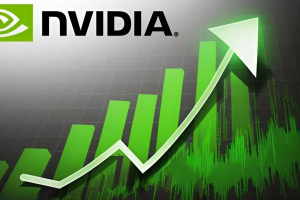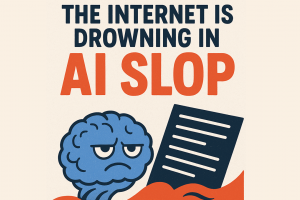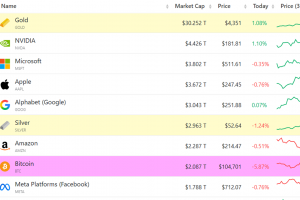GPUs started as tools for gamers chasing better graphics, but today they’re fueling the biggest shifts in human progress—from artificial intelligence to the Metaverse. This essay explores how graphics processors are redefining industries, reshaping creativity, and powering a future where imagination knows no limits. Whether you’re a gamer, a tech enthusiast, or simply curious about what’s next, this story will change the way you see GPUs forever. Dive in and discover why GPUs are no longer just about pixels—but possibilities.
🚀 Introduction: Why GPUs Shape the Future of Human Imagination
Pause for a moment and think about it: every breathtaking video game you’ve ever played, every cinematic special effect that left you speechless, every AI-generated image that amazed you—all of it exists because of one technology: graphics processing units (GPUs).
But here’s the twist—GPUs are no longer just “gaming hardware.” They’ve evolved into the backbone of the digital future—powering artificial intelligence, cloud computing, virtual reality, and yes, even the emerging Metaverse.
This is not just about tech. It’s about how human creativity, imagination, and ambition are expanding into entirely new dimensions. And the story of GPUs is the story of where we’re going as a species.
🎮The Golden Era of PC Gaming
For decades, PC gaming has been the frontier of graphics innovation. Nvidia’s GeForce series, AMD’s Radeon, and Intel’s new entrants have turned GPUs into cultural icons.
-
In the early 2000s, a GPU meant better textures, smoother frames, and more immersive experiences.
-
Competitive gamers upgraded every few years, chasing performance benchmarks like “60 FPS” or “4K gaming.”
-
Today, we’re talking about real-time ray tracing, AI-driven upscaling (DLSS, FSR, XeSS), and near-photorealistic worlds.
But gaming was only the beginning. What started as “fun” transformed into something far bigger: GPUs became the most critical computing engines of our time.
🤖 The AI Revolution (Fueled by GPUs)
If you’ve been amazed by ChatGPT, MidJourney, Stable Diffusion, or self-driving cars, here’s the truth: none of this would exist without GPUs.
Why? Because GPUs excel at parallel processing. Instead of handling one task at a time (like CPUs), GPUs handle thousands of operations simultaneously. That’s exactly what AI and machine learning require.
-
Training a large AI model? You need thousands of high-end Nvidia A100s or H100s running in massive data centers.
-
Want to generate an ultra-realistic 3D character in seconds? GPUs make it possible.
-
Even drug discovery and climate modeling are GPU-powered.
Here’s a stat: over 95% of AI training workloads run on GPUs today. In other words, GPUs are no longer “gaming cards.” They’re the supercomputers of the 21st century.
☁️ Cloud Gaming – Play Anywhere, Anytime
Imagine this: you open your phone, tap an app, and instantly play Cyberpunk 2077 at ultra settings—without needing a $3000 gaming PC. That’s cloud gaming.
Platforms like Nvidia GeForce NOW, Xbox Cloud Gaming, and PlayStation Plus Premium are betting big on this future. Instead of local hardware, games run on GPU-powered servers and stream to your device.
Cloud gaming isn’t just about convenience—it’s about accessibility. Millions who can’t afford high-end rigs can now experience top-tier gaming. This democratization is huge.
But it goes further. Cloud infrastructure powered by GPUs is what will eventually host entire Metaverse worlds.
🌐 The Metaverse – A GPU-Powered Reality
The Metaverse isn’t just hype—it’s the convergence of gaming, AI, VR/AR, and social connection. Whether it’s Meta (Facebook), Apple’s Vision Pro, or decentralized projects like Decentraland, the Metaverse relies on one critical thing: real-time graphics rendering.
-
Every avatar.
-
Every 3D object.
-
Every immersive environment.
All require GPU horsepower.
Think about it: when billions of people are simultaneously inhabiting a digital universe, GPUs will be the engines of that shared reality.
And this future isn’t science fiction—it’s unfolding right now.
💡 Beyond Gaming – GPUs and Human Progress
Here’s what most people miss: GPUs are now central to all human progress.
-
Healthcare: GPUs accelerate medical imaging, drug discovery, and even personalized treatment plans.
-
Climate Science: Simulating global weather models requires GPU-scale parallel computing.
-
Space Exploration: NASA uses GPUs for astrophysical simulations.
-
Education & Design: Virtual classrooms and real-time 3D design are GPU-driven.
In short, GPUs are not about pixels anymore—they’re about possibilities.
🔮 The Future of GPUs (2025–2035)
Where do we go from here? Several trends will define the next decade:
-
AI-Native GPUs – Future chips will be designed primarily for AI, not just graphics.
-
Cloud-First Gaming – Hardware will matter less; your internet connection will matter more.
-
Metaverse Infrastructure – Billions of GPUs running in sync to build persistent, shared worlds.
-
Energy Efficiency – GPUs will evolve to become greener, balancing performance with sustainability.
-
Quantum + GPU Hybrids – The far future may see GPUs paired with quantum accelerators.
The bottom line? GPUs are the new electricity. Just as electricity powered the 20th century, GPUs will power the 21st.
🌟 Conclusion: Why This Matters to YOU
Here’s the truth: whether you’re a gamer, an entrepreneur, a creative, or just someone curious about the future—GPUs will shape your life.
They’re not just hardware. They’re the engines of imagination.
So the next time you see a breathtaking video game, an AI-generated masterpiece, or hear about the Metaverse, remember this: it’s all powered by GPUs. And the best part? This journey is just beginning.
Are you ready for the next chapter of human creativity?
💬 What excites you most about the GPU-powered future—gaming, AI, or the Metaverse?
Drop your thoughts below and let’s start a conversation!
🔁 Share this post if you believe GPUs are more than just for gaming.
❤️ Because the future belongs to those who can imagine it—and GPUs are the brushstrokes of that imagination.




















